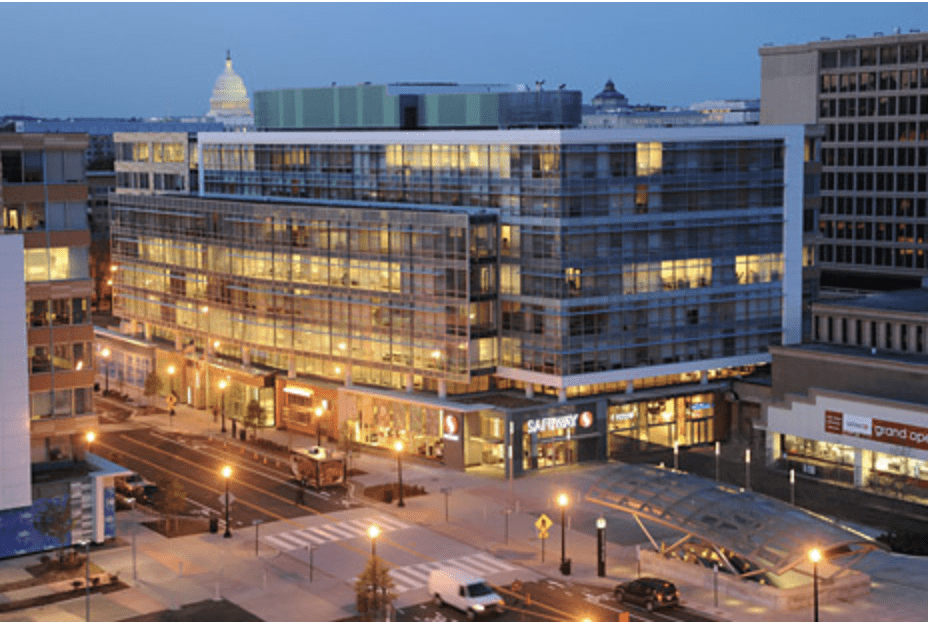Ward 2 Council Member Pinto Supports DCRA Split
By • November 7, 2022 0 1231

When does it make sense to split a major city agency in two? In the case of the dissolution of the District’s Department of Consumer and Regulatory Affairs (DCRA) into two separate agencies – the Department of Buildings (DOB) and the Department of Licensing and Consumer Protection (DLCP) – the D.C. Council and the mayor ardently disagree. But Ward 2 Council member Brooke Pinto who voted for the split remains cautiously optimistic.
Following watchdog complaints over DCRA’s lax inspections, dangerous building code violations, collapsed buildings, long waits for permits, blighted apartments, and the agency’s seeming inability to rein in abusive landlord practices or collect fines from offenders, the D.C. Council voted unanimously – over a veto by Mayor Bowser in 2020 – to abolish DCRA and create two new clearly-delineated agencies in its stead.
The move marked the largest reorganization of the District’s government in a decade and took effect at the stroke of midnight, Oct. 1, 2022.
Established in 1983, DCRA’s charter was perhaps overly broad, as it oversaw city business licenses, construction permits, housing inspection reports and building code violations. In a 2020 memo explaining her veto, Mayor Bowser (D) said the D.C. Council was overlooking “significant progress over the past several years in improving processes and operations” at DCRA.
According to the DOB’s new website (dob.dc.gov), the department’s mission is to “protect the safety of residents, businesses, and visitors and advance the development of the built environment through permitting, inspections, and code enforcement.”
On Oct. 1, the new DLCP was also established. According to the DLCP’s website (dlcp.dc.gov), its mission is to “protect the economic interests of residents, businesses, and visitors in the District of Columbia by licensing and regulating businesses and investigating and enforcing the Consumer Protection Procedures Act.”
According to the District government’s transition website (dcratransition.dc.gov), the two new agencies will “serve residents, businesses, and visitors of the District of Columbia, taking on responsibilities” previously under the DCRA and it “will allow each agency to enhance their consumers’ experiences through promoting their health, safety, and quality of life.” The new agencies will also “deliver effective compliance, meaningful regulation, and timely maintenance, putting consumer protection at the forefront….”
Though D.C. Council Chair Phil Mendelson (D) heralded the splitting of DCRA as providing more efficient services and accountability, Mayor Bowser said it would add to the city’s bureaucratic woes. Just hours before the new agencies were launched, she appointed the then-director of DCRA and a figure familiar to the probing D.C. Council, Ernest Chrappah, as the acting director of the new DOB. She also selected Shirley Kwan-Hui, the then-deputy director of DCRA to become the acting director of the new DLCP. Not exactly new faces.
According to The Washington Post, D.C. Council Chair Mendelson (D) immediately “pushed back against Bowser’s picks.” In a statement, he commended Chrappah’s public service, but said “Bowser has shown an unwillingness to embrace a fresh start with the new structure.” The new DOB “is a chance to be transformative,” Mendelson said. “It’s an opportunity to bring in or promote a change agent. Simply moving over the head of the Department’s dysfunctional predecessor-agency misses that chance.”
While critics of DCRA said the agency had a “spotty record of protecting tenants from bad housing conditions and enforcing consumer protection laws,” Mayor Bowser has maintained that the breakup of the agency was “unnecessary, costly, and would derail her efforts to improve DCRA,” wrote DCist reporter Martin Austermuhle.
Mendelson and Bowser are each partially correct, however. The restructuring will provide increased services and accountability, but will be more costly and require hiring more government employees. While DCRA had 500 employees at its peak, the two new agencies will grow the city’s workforce by 100. The new DOB will have 400 employees while the DLCP will have 200. The DCRA’s 2022 budget was $90 million, but the new 2023 budget for the DOB will be $68.7 million and for the DLCP $37.7 million, combining for an increase of over $16 million.
“We’re going to be hiring,” Mayor Bowser told WUSA9 news. “This is part of the reason I don’t love the idea because we have to create a whole new bureaucracy. It’s also presented some strain on the existing bureaucracy.”
Georgetown’s Ward 2 Council member Brooke Pinto, however, expressed cautious optimism about the D.C. Council’s decision.
Pinto told The Georgetowner, “Businesses and residents deserve and expect District services to be efficient, to help create a supportive business environment, and to enhance their quality of life. My hope and expectation is that the creation of the Department of Buildings and the Department of Licensing and Consumer Protection will lead to better services for residents and allow for the Council to have greater and more exacting oversight over the important functions of these agencies.”

